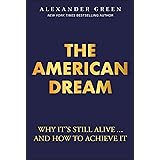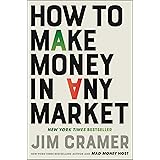The precious metals market has recently experienced significant upward momentum, yet discerning investors are well aware that such strong rallies often precede periods of consolidation or correction. As explored in the accompanying video, the current trajectory for both gold and silver presents an intriguing dichotomy: substantial long-term bullish potential juxtaposed with the distinct risk of a notable short-term pullback. Understanding these dynamics is crucial for navigating the evolving landscape of gold and silver prices.
This detailed analysis will delve deeper into the factors driving these precious metals, examine key technical indicators, and outline potential scenarios for the coming months and years. We will explore the ambitious price targets for 2025 and beyond, while also identifying critical warning signs that could signal a temporary reversal. Informed preparation for market fluctuations remains a cornerstone of successful investment strategies.
Analyzing the Gold Price Outlook: Targets and Potential Corrections
Gold has demonstrated impressive strength, breaking out of a recent consolidation phase that spanned several weeks and months. This upward move signifies a continuation of the established uptrend, fueling optimism among market participants. Consequently, a target of $4000 per ounce for gold in 2025 appears increasingly plausible, reflecting robust underlying demand and favorable macroeconomic conditions.
However, this bullish outlook is tempered by the recognition of potential short-term vulnerabilities within the gold market. Historically, extended rallies in bull markets are often punctuated by corrections that serve to “cool down” overbought conditions. Examining the monthly chart, the Relative Strength Index (RSI) currently indicates an overbought status, signaling that the asset may be trading above its intrinsic value and could be due for a pause.
Furthermore, gold’s current price stands a considerable distance from its 20-month simple moving average, a level that has historically served as a significant support during bull market pullbacks. Should a correction materialize, a decline to approximately $3000 per ounce is not beyond the realm of possibility. This level represents a roughly 20% pullback from current highs and aligns with previous support zones, providing a crucial area for potential re-accumulation.
For instance, an initial support level is identified around $3250, corresponding to the upper bound of the recently overcome consolidation range. Sustained trading below this level could indicate a deeper correction towards the $3000 mark. Such a drawdown, while significant, would be considered a healthy recalibration within a larger, long-term gold bull market, similar to patterns observed in the early 2000s.
Key Macroeconomic and Technical Triggers for Gold
Several critical factors could trigger a near-term correction in gold prices, necessitating close monitoring by investors. A primary concern involves the strength of the US Dollar Index (DXY), which often exhibits an inverse relationship with gold. The dollar’s recent chart patterns, particularly a potential double bottom formation on the weekly chart, suggest a period of dollar strength may be imminent in the coming weeks.
A stronger dollar would typically exert downward pressure on gold, as it makes dollar-denominated assets more expensive for international buyers. This could lead to a temporary sideways consolidation or even initiate a price correction. Therefore, observing the DXY’s movement provides an important forward-looking indicator for gold investors seeking to anticipate market shifts.
Additionally, unexpected shifts in Federal Reserve policy or economic data could serve as catalysts for a gold price correction. The market is currently pricing in multiple interest rate cuts for 2024, with the FedWatch Tool indicating a high probability of cuts by October and December. Should inflation data prove stubbornly high, perhaps influenced by new tariffs flowing into economic data, the Fed might be compelled to delay or even reverse its dovish stance.
An unexpected hawkish pivot from the Fed, or even discussions about potential rate hikes, would be significantly bearish for gold in the short term. Higher interest rates typically increase the opportunity cost of holding non-yielding assets like gold, diminishing its appeal. Consequently, closely watching inflation reports and official Fed communications is paramount for understanding gold’s immediate future.
Understanding Silver’s Potential and Risks
Silver has also performed exceptionally well, demonstrating even stronger relative performance compared to gold during recent sideways market phases. Its historical volatility often translates into more pronounced movements during bull markets, offering substantial upside potential. The prospect of silver reaching $50 per ounce in 2025 is a widely discussed target among precious metals enthusiasts, representing a significant milestone.
Reaching this $50 mark, often dubbed the “Holy Grail” for silver, would likely be achieved through a parabolic rally, a characteristic trait of silver’s behavior in strong bull markets. However, such rapid ascensions frequently precede equally sharp pullbacks. Therefore, investors should prepare for a potential correction down to $40 per ounce after hitting the $50 target.
A 20-30% correction is a common occurrence in volatile assets like silver and does not necessarily signal the end of a primary bull trend. Instead, it provides an opportunity for investors to either take profits, rebalance their portfolios, or consider re-entry at more favorable prices. This healthy market adjustment allows for the dissipation of speculative froth and strengthens the overall long-term trend.
Broader Economic Tailwinds for Precious Metals
Despite the discussed risks of short-term corrections, the overarching economic environment remains fundamentally supportive of a long-term bull market in both gold and silver. A weakening US Dollar Index over several years, mirroring patterns seen in the early 2000s, would provide a powerful tailwind. This long-term dollar depreciation would make precious metals more attractive globally, potentially pushing gold towards targets like $5000 by 2026 and even $10,000 by 2030, though these higher figures remain highly speculative.
Moreover, the global trend towards central bank interest rate cuts, especially from the Federal Reserve, typically benefits precious metals. Lower interest rates reduce the yield on fixed-income assets, making non-yielding assets like gold and silver more appealing by decreasing their opportunity cost. The market’s expectation of continued rate cuts provides a baseline of support for further price appreciation.
However, the interplay between inflation and interest rates is nuanced. While rising inflation might initially seem bullish for gold as an inflation hedge, the market’s primary focus often shifts to how central banks react to such data. If inflation spikes, forcing central banks to maintain or even raise rates, this could temporarily overshadow gold’s appeal as a safe haven asset. Conversely, if central banks continue to ease monetary policy, leading to an expansion of the money supply and currency debasement, this creates a robust environment for precious metals.
Finally, the performance of gold and silver mining stocks generally correlates with the prices of the underlying commodities. During corrections in gold and silver, mining stocks often experience amplified pullbacks, presenting strategic entry points for investors. Conversely, strong commodity price rallies tend to lift mining stock valuations, reflecting improved profitability prospects for these companies.











